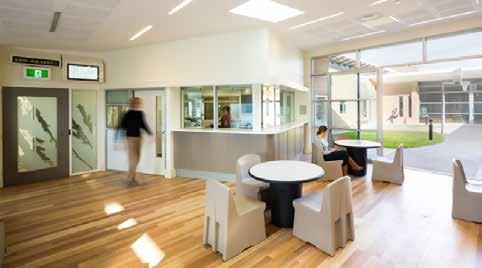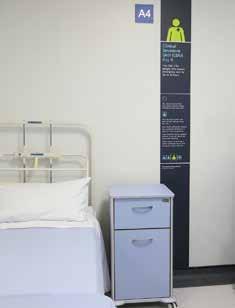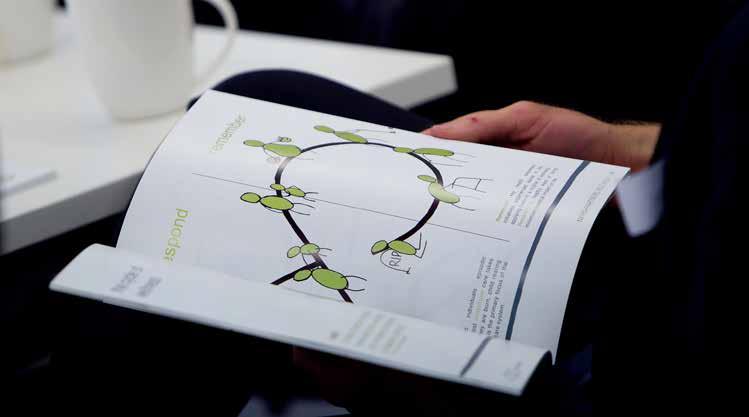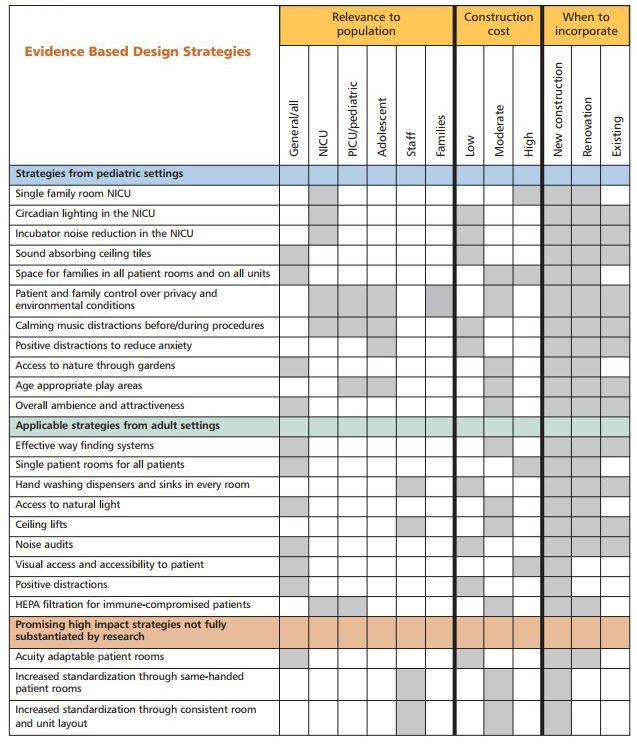CASE STUDY 04: PATIENT STRESS & WAYFINDING Understanding the patient perspective and designing patient flows to accommodate for the wide range of presentations is vital in providing the right care, at the right time, and in the right place. Following a near fatal shooting of a police officer and security guard at Nepean Hospital Emergency Department in January 2016, a review of ED security was commissioned by NSW Health. This review led to a 12 point action plan established by auditors along with recommendations to NSW Health. The report includes a focus on the safety and security of workplaces, funding for security upgrades and ongoing auditing of facilities (NSW Minister for Health, 2016).
and carers (NSW Health, 2011, p7). For example, an ED model of care which incorporates a Clinical Initiatives Nurse is recommended by NSW Health (2012(1), p15) to maintain a nurse presence in the waiting room, as well as supporting and streamlining the triage process. This approach supports nurse-initiated interventions such as ordering diagnostics and administering pain-relief.
Wayfinding, guidance and training can be used to reduce incidents of violence and aggression in EDs. “A Better A&E” is a design solution developed by PearsonLloyd for The Design Council UK and 3 partner NHS Trusts to provide a cost-effective method of reducing violence in emergency. The design solution successfully reduced hostility, as well as providing social and economic return, with monetised benefits outweighing costs 3 to 1. (Frontier Economics, 2013, p6).
The physical design of healthcare spaces has transformed in many ways to become more welcoming and inviting, with a renewed focus on light and sound attenuation, positive distraction and access to useful information (Suchomel, 2016). In new Kaiser Permanente health hubs, reception areas are designed as public ‘mall’ with indoor, outdoor spaces, health monitoring stations, and a staffed ‘Thrive Bar’ where patients can access advice on nutrition, exercise and other wellness issues while they wait (Bluestein, 2016). This approach supports Ulrich’s (1991) theory of supportive design for healthcare facilities, which focuses on patient wellbeing and alleviation of stress to provide a sense of control, positive distraction and social support.
Negative patient experiences often cause operational problems and workplace stress in EDs. Studies have shown that there are common psychological principles that apply to the ‘waiting experience’. Understanding and managing these waiting patients appropriately can help to reduce anxiety and frustration of patients
In 2011 the UK Design Council in collaboration with the UK Department of Health sought to deal with the ever increasing numbers of attendances at Accident and Emergency (A&E) departments in England and the negative experiences of staff and patients. The intention was to use design to alleviate tensions, and ultimately to reduce
18
ENVISION WELLNESS Acute Health Design
violence and aggression. A multi-disciplinary design team led by PearsonLloyd worked with the Design Council and 3 partner NHS Trusts to develop a set of design solutions and an online design kit to provide recommendations to NHS Trusts. An evaluation and findings report was conducted by Frontier Economics to review the outcome of the project. Frontier Economics (2013, p16) and ESRO research agency conducted preliminary research to identify triggers of violence and aggression such as: Clash of people: Many areas in ED departments are crowded with a range of different people, forced together by difficult circumstances – each undergoing their own stresses and dealing with their own complex mix of clinical and non-clinical needs. Lack of progression: While all Trusts aim to treat 95% of patients within 4 hours, waiting for any length of time can be a difficult experience. There are few situations in our lives when we are forced to wait for such lengths of time without any sense of progression. Inhospitable environments: Many people describe a dislike of hospitals, not least because they are full of sick people. Beyond the patients, hospitals can be uncomfortable places which are not pleasant to spend time in. Dehumanising environments: When arriving at ED people can feel ‘out of sorts’ or in a negative mood. Sometimes the way patients are managed can further lead to a loss of perspective.






